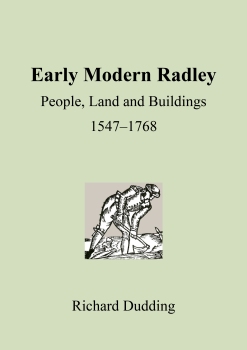by Richard Dudding
Published May 2014
ISBN 9780956863232
150 pages
£12.00 plus £3.50 postage & packing for UK delivery (total £15.50)
The book tells the story of the emergence and disappearance of Radley’s yeoman farmers and the change from open fields to the enclosure of land. Richard Dudding analyses contemporary records, including estate surveys of 1547, 1633 and 1768, and evidence from the surviving buildings, to construct a detailed picture of the village at the time: its social structure, land holdings and farming practice, and the homes people lived in
The study begins just after the dissolution of Abingdon Abbey, which led to the Stonhouses, a rising gentry family, acquiring Radley Manor. At that time, land was mostly farmed in open fields by middling yeomen. Although owing formal allegiance to the Manor they were self-dependent as is reflected by the houses they built. By the close of the period, land had been enclosed and consolidated into large tenant farms. The yeomen had all gone, and their houses divided into cottages for landless labourers.
Using contemporary records, Richard has been able to explore and analyse the evolutionary processes by which these changes took place. It is of interest to local people wanting to understand their past, and also to those with a wider interest in social and economic change in the early modern period.
To buy a single copy for UK delivery, click on the ‘Buy now’ button. This will take you to the shopping cart where you can pay using your debit/credit card via PayPal.
If you want more than one copy or overseas delivery, please get in touch for a revised postage & packaging cost. Also if you wish to pay by BACS transfer or by cheque.Contents
Chapter 1: Introduction
Chapter 2: Context
Chapter 3: People
Chapter 4: Buildings
Chapter 5: Synthesis
Annex A: Radley population in the mid sixteenth century
Annex B: Fields in the 1633 Terrier
Annex C: The 1547 Survey reconciled against ther 1633 Terrier
Annex D: Thomas Nichols’ probate inventory
